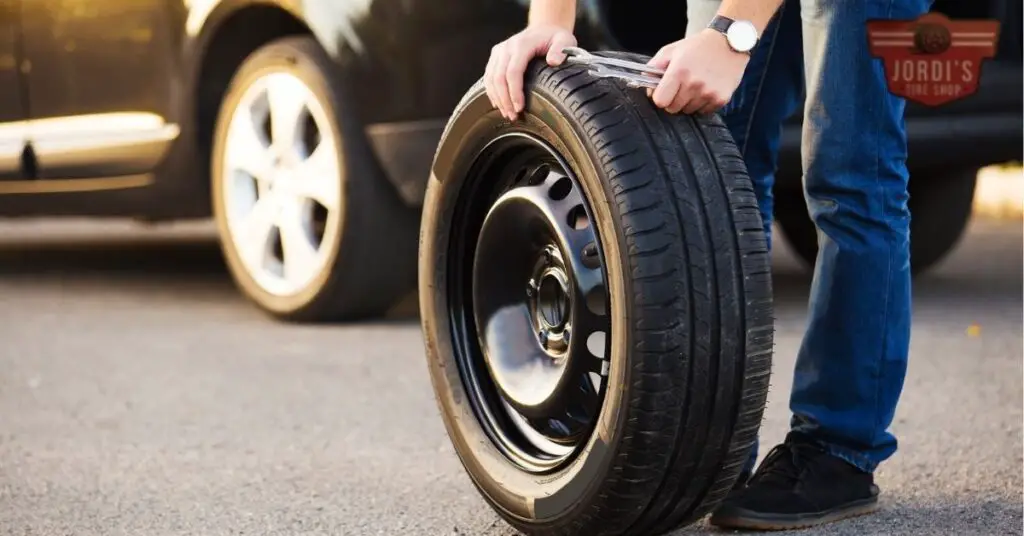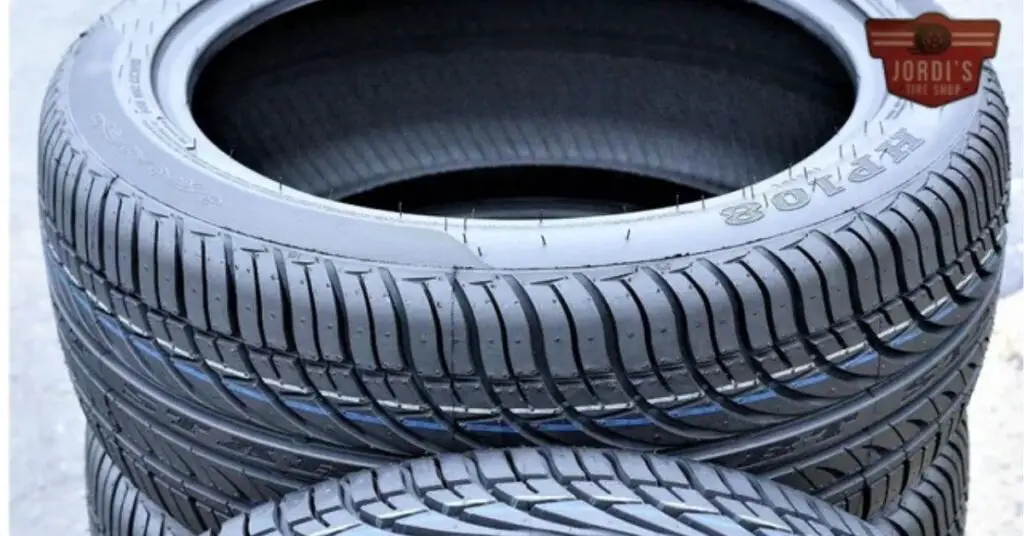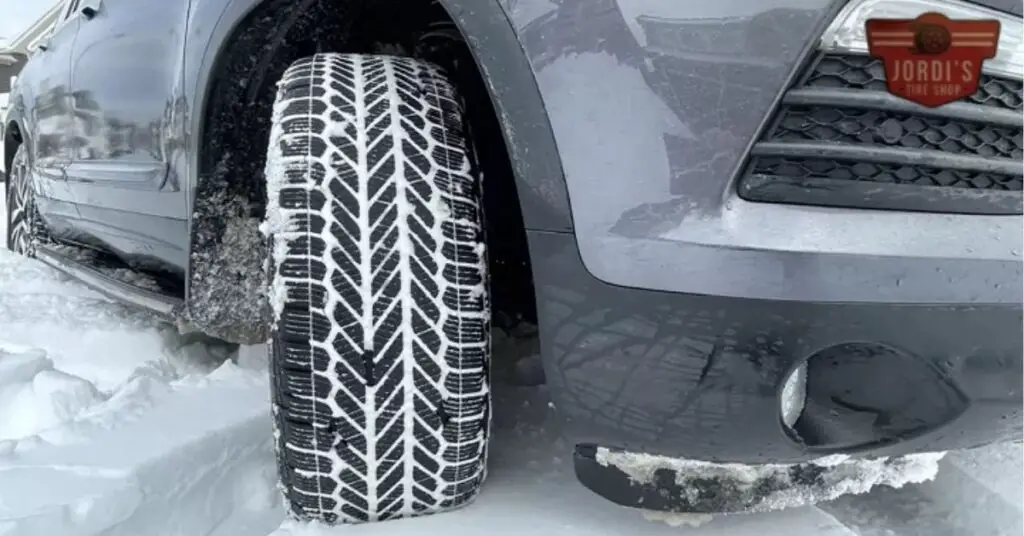Ever found yourself in a pinch with a flat tire and only a donut spare in your trunk? You’re not alone. Many drivers have faced this dilemma and asked the burning question: “Can I drive 200 miles on a donut?”
In this text, we’ll jump into the specifics of donut spare tires, their design, and their limitations. We’ll explore whether it’s possible – or advisable – to push a donut to cover that 200-mile stretch. So buckle up and get ready for an enlightening journey into the industry of automotive know-how.
Understanding Donut Spare Tires

Transitioning from the general to the exact, let’s examine the intricacies of donut spare tires. Talking about their construction, capabilities, and contrasts with regular tires will illuminate the matter.
What is a Donut Spare Tire?
A donut spare tire, also known as a compact temporary tire, is a scaled-down version of a full-size tire. Manufacturers design these tires for temporary use. Their compact size makes them easy to store in a vehicle’s trunk yet they’re sturdy enough for short-term use to get you to a service station. Less prominent treads and a slimmer profile distinguish donut tires from their full-size counterparts. They are often not as durable nor as safe as regular tires, specifically when used over long distances or at high speeds.
Differences Between Donut Tires and Regular Tires
Enlightening yourself about the disparities between donut tires and regular tires is crucial for understanding their inherent limitations. First, the size of these two types of tires is fundamentally different. A donut tire is notably smaller and narrower than a regular tire; as such, it cannot handle prolonged use or high speeds as effectively.
Second, the construction is markedly variable. Donut tires have less tread depth and sparse patterns. These features help with vehicle compactness and maneuverability, but they compromise traction in wet conditions or at high speeds.
Finally, the load capacity differs significantly. Donut tires aren’t built to take on as much weight or maintain high speeds for extended periods. They’re a stop-gap solution to keep you mobile until you arrange for a proper tire repair or replacement.
Safe Mileage and Speed for Driving on a Donut

Handling the realms of donut spare tires involves understanding their inherent limitations, particularly in terms of safe mileage and speed. This section delves into key pointers from typical manufacturer advice and highlights potential issues linked to donuts’ overuse.
Typical Manufacturer’s Advice
Typically, manufacturers furnish a clear stipulation for the usage of donut spare tires. In general, they recommend a maximum distance of 50 to 70 miles at a top speed of 50 miles per hour. This guidance stems from the tire’s design, as donuts are made with less tread, resulting in lower durability compared to full-sized tires.
Potential Issues with Overuse
Venturing beyond the manufacturer’s recommendations incurs tangible risks. Excedding the mileage or speed limits for a donut tire may result in rapid wear, leading to potential tire failure. Also, prolonged usage might adversely affect your car’s suspension because of the tire’s reduced size and load capacity. So, relying on a donut tire for more than the prescribed limits, such as a 200-mile journey, is not advisable for your car’s safety and longevity.
Real-life Stories: Can I Drive 200 Miles on a Donut?
Exploring into this query, we present a mix of real-industry anecdotes depicting unique instances of people driving significantly long distances on donut tires.
Successful Long Drives on Donuts: Rare Cases
Believe it or not, there have been limited occurrences where drivers, even though the odds, managed to drive extensive distances on donut spare tires. Take, for instance, a report of a driver who navigated his way over 200 miles on a donut spare tire. But, these tales are the exception rather than the rule. It’s crucial to keep in mind these noted instances are anomalies rather than the standard. Higher chances exist of these cases ensuing more due to luck, not because the donut tire is designed for such use.
Failed Attempts: The Dangers of Over-Distance
In sharp contrast to the above, several accounts underline the potential risks and hazards linked with overextending the use of a donut spare tire. A motorist once attempted a 200-mile drive on a donut tire. Unfortunately, they experienced a blowout at around mile 120, leading to a hazardous pause on a busy freeway. Another story includes a long haul of around 175 miles, where important damage occurred to the vehicle’s brake system due to the spare tire’s limitations. In most cases, the risks outweigh the benefits, enforcing the manufacturers’ guidance of a maximum of 50 to 70 miles of use on a donut tire. Overextending this limit can yield dire situations, and it’s recommended that long drives on a donut spare tire be avoided when possible.
Against All Odds: Safety Precautions When Driving on a Donut

Having a grasp on safety precautions when driving on a donut could save your vehicle from potential damage and keep you on the safer side. Ergo, it’s crucial to dive deeper into the “dos” and “don’ts” of using a donut spare tire in different circumstances.
Things to Avoid When Driving on a Donut
Driving on a donut comes with restrictions. For starters, avoid high speeds. The donut tire isn’t suitably designed for speeds exceeding 50 miles per hour, and going faster could spell disaster. It’s not built to handle the strain of high speed, so risking a tire blowout.
Further, dodging prolonged use of a donut is wise. Even though instances of drivers covering more than 200 miles on a donut spare tire, remember these are the exception, not the rule. Extending its use increases its wear and, as a result, intensifies the risk of tire failure.
Finally, circumvent heavily loaded vehicles. A donut tire’s load-bearing capacity is far less than standard tires. Adding surplus weight in terms of passengers or cargo would amplify pressure on the donut tire and deteriorate its functionality.
Immediate Actions After Putting on a Donut
Your moves following the mounting of a donut matter significantly. Initially, check the tire’s pressure. Donut tires require greater inflation than regular tires, typically between 60 to 70 PSI (pounds per square inch). Hence, it’s crucial to affirm that the donut tire is inflated to the correct pressure level to ensure its safe and smooth function.
So, plan your route carefully. Opt for side roads and avenues that allow you to maintain slower speeds and minimize distance. If possible, avoid highways and interstates where speeds are higher, and driving distances tend to elongate.
Eventually, fix an appointment with a professional or a trusted tire shop to replace the donut as soon as possible. Remember, the donut serves as a temporary solution to your flat tire issue. Getting a full-size tire replacement should top your priority list once a donut is in play.
The Damages of Overdriving a Donut
Pushing beyond the markers of safety for a donut spare tire poses important repercussions not only for the tire itself but also for the vehicle.
Risks to the Donut Spare Tire
Taking a donut tire beyond its designed limits can invite all sorts of issues. Properly inflated to between 60 and 70 PSI, a donut can confidently manage short distances at a maximum speed of 50 miles per hour. Testing these boundaries could result in overheating due to increased friction, rapid wear, or even a tire blowout.
Also, using donuts for prolonged periods and high milage exposes the tire’s vulnerabilities, causing quick wear and tear. Keep in mind that lucky instances of achieving over 200 miles on a donut tire are exceptions and not the norm.
Potential Car Damages
Your vehicle experiences stress when you overuse a donut tire. The disparity in size between the donut tire and regular tires places a high strain on the car’s differential, a critical mechanical component that facilitates smooth turning. Extended usage could result in premature wear on one side, causing the differential to fail.
Also, your vehicle’s stability is compromised as donuts are not designed for sustained use or high speed. An issue that potentially results in sudden shifts in the car’s balance, limiting handling and increasing the risk of a rollover accident.
Finally, the braking system is affected negatively. Donuts, being smaller in size, provide a smaller contact patch with the road. This reduction prolongs your vehicle’s stopping distance, posing a safety concern, particularly at high speeds. Eventually, these risks make it imperative to replace the donut with a full-size tire promptly.
Alternative Strategies for Long-distance Car Emergencies

It’s essential to have a plan when faced with automotive emergencies, especially during long drives. This section delves into some potential strategies that you can use if a flat tire that goes beyond the capabilities of your spare donut.
Portable Tire Repair Kits and Their Uses
If a puncture when on a long trip, you’re better off carrying a portable tire repair kit. These kits, compact in size and convenient to carry, prove useful in sealing punctures temporarily until you’re able to reach a tire repair shop.
A typical portable tire repair kit includes tools and a sealant. The sealant is a quick-fix solution injected into the tire through the valve stem to seal small perforations, while the tools can prove handy in larger punctures. On usage, always bear in mind that the sealant damages the tire balancing upon hardening and is merely a temporary remedy, meaning a proper repair or tire replacement remains inevitable in a short span.
When to Call a Tow Truck
It’s no secret that pushing a donut tire well beyond its recommended usage limit poses important risks. When stranded on long journeys, it becomes savvy to call a tow truck. Contact a towing service if you’re dealing with a severe tire damage that a spare donut or repair kit can’t handle, find yourself more than 70 miles from the nearest repair shop, or are dealing with additional vehicle problems like a damaged rim.
It may seem financially daunting initially and add some hours to your travel time, but it indeed mitigates the risk of damaging your vehicle further, prolonging its lifespan. Insurance companies often cover the cost of towing under exact circumstances, making it even more a prudent option. Safe and efficient, the towing service is a strategic choice, preserving your car in the best state possible until professional help arrives.
Conclusion
So, can you drive 200 miles on a donut? The short answer is no. Donut tires are not designed for long-distance or high-speed use. They’re a temporary solution meant to get you to the nearest repair shop, not for a 200-mile trek. It’s best to stick to the manufacturer’s advice – a maximum of 50 to 70 miles at no more than 50 miles per hour.
Ignoring these guidelines can lead to rapid tire wear, potential failure, and even damage to your vehicle’s suspension. While there are stories of drivers pushing these limits, they’re the exception, not the rule.
Remember, safety first. Avoid high speeds, check your tire’s pressure, and plan your route to minimize distance. As soon as possible, replace your donut with a full-size tire. If you’re faced with a long-distance emergency, consider using a tire repair kit or calling a tow truck. It’s all about making informed decisions to keep you safe on the road.
What is a donut spare tire?
A donut spare tire, also known as a compact temporary tire, is a reduced version of a full-size tire. It’s designed for temporary use until a proper tire repair or replacement is arranged. It’s smaller, has less tread, and isn’t suitable for long-term use or high speeds.
Can one drive 200 miles on a donut tire?
Driving 200 miles on a donut tire isn’t advisable in normal circumstances. The typical guideline is a maximum of 50 to 70 miles at a maximum speed of 50 mph. Driving beyond these limits puts you at risk of tire failure and damage to your car’s suspension.
What happens if you drive more than the recommended limits on a donut?
Exceeding recommended limits can cause rapid tire wear, potential tire failure, and can have adverse effects on the car’s suspension. This could eventually lead to more serious damages like blowouts, overheating, and premature wear of the car’s differential.
What precautions should I follow when driving on a donut tire?
You should avoid excessive speed, high-load situations, and elongated periods of use. The tire’s pressure should be maintained between 60 to 70 PSI. You should plan your route avoiding highways and replacing the donut with a full-size tire as quickly as possible.
What alternatives do I have if a flat tire occurs on a long-distance journey?
Carrying a portable tire repair kit could help in temporary puncture fixes. In case of severe tire damage or when more than 70 miles away from a repair shop, it’s safer to call for a tow truck. However, prompt replacements or proper repairs are necessary regardless.
Related Posts:
- Unveiling the Time It Takes to Change Tires: A Comprehensive Guide for US Drivers
- Pushing the Limits: Can You Really Drive 200 Miles on a Donut Spare Tire?
- Facing the Music: Can Slashing Tires Land You in Jail?
- Understanding the Cost: How Much Does a Dump Truck Load of Gravel Really Cost?
- Unraveling the Costs: What You’ll Pay for Monster Truck Tires

